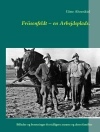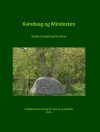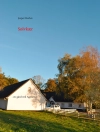The book comprehensively investigates the relationship between critical urban form and fabric parameters and urban microclimate in the high-rise urban environment that prevails in Asian megacities such as Shanghai. It helps readers gain a deeper understanding of climate-responsive urban design strategies and tactics for effectively mitigating the negative impacts of deteriorating urban thermal environments on pedestrian thermal comfort, outdoor air quality and building energy consumption. It also reviews the latest advances in urban climate research, with a focus on the challenges in terms of outdoor space comfort, health, and livability posed by the high-rise and high-density development in emerging Asian megacities, and proposes an integrated framework in response to the pressing need for microclimate research. It then presents a series of studies on high-rise residential and non-residential urban neighborhoods and districts based on instrumented field study, validated numerical simulation, and spatial analysis using a GIS platform.
The book includes extensive, valuable experimental data presented in a clear and concise manner. The thermal atlas methodology based on empirical modeling and spatial analysis described is a useful climate-responsive design tool for both urban designer and architects. As such, the book is of particular interest to researchers, professionals, and graduate students in the fields of urban planning and design, building science and urban climatology.
Cuprins
High-rise urban form.- Urban form and urban climates.- Urban high-rise microclimate.- Urban heat island intensity in residential quarters.- Pedestrian wind environment in residential quarters.- Solar radiation in high-rise urban environment.- Cooling effects of urban greenery at three scales.- Developing a thermal atlas for commercial-business.
Despre autor
Feng YANG is currently an Associate Professor at the College of Architecture and Urban Planning, Tongji University, Shanghai, China. Dr. Yang’s research focuses mainly on climate-responsive urban design, and passive and low-energy architecture. He has published extensively in peer-reviewed journals and also serves as a manuscript reviewer for publications such as the Journal of Building and Environment, Energy and Buildings, and Architecture Science Review. He is the Principle Investigator of more than ten completed and ongoing research projects, including two China National Natural Science Funds (NNSF). He holds a B. Arch. degree from Hunan University, a M. Arch. from Tongji University and a Ph.D. from the University of Hong Kong. He was a Visiting Professor at the School of Architecture, Rensselaer Polytechnic Institute, NY, USA in 2016. He is an elected member of the Youth Committee member, China Green Building Council (CGBC). His research in building energy-efficiency design and technology won him the 3rd Prize of the 2017 Science and Technology Award by the Shanghai Government.
Liang CHEN is currently an Associate Professor at the School of Geographic Sciences, East China Normal University. He holds a bachelor’s degree in Computer Science from Tsinghua University and a Ph.D. degree in Architecture from the Chinese University of Hong Kong. His research interests include the spatial modeling and measurement of micro-scale urban climates, focusing on the influence of building morphology, land surface and vegetation cover on human thermal comfort in a complex urban environment. He holds a number of research funds, including the National Natural Science Funds of China and the Natural Science Funds of Shanghai. He has published extensively in internationally respected journals, including Building and Environment, Landscape and Urban Planning, Energy and Buildings, and Architecture Science Review, and he is an active reviewer for these journals. He has participated in a number of research projects on urban climate modeling and application in Hong Kong, Japan, Sweden, Germany and Singapore.












